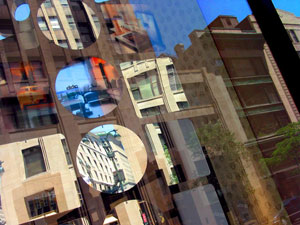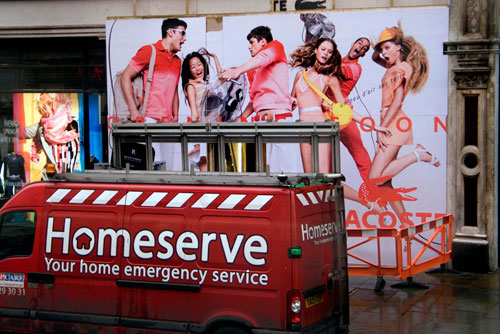About Citiscapes
I’ve always been fascinated by the hustle and bustle of the big city. The sheer energy of a metropolis permeates almost every aspect of its being and of its inhabitants.
These photographs are the visual equivalent of the complexity of the city. The camera is the perfect instrument for this task in that it can take a vast three-dimensional space, typically a foreground, mid-ground, and background, and compress them into a single two-dimensional entity – the photograph, thereby opening new linkages between elements that, in the three-dimensional world, are isolated and independent.
Irony is often found in these happenstance moments, like when a truck providing “home emergency service” is passing in front of a billboard of young people wildly partying. Or, when the Las Vegas Sahara Hotel’s plastic camels are being led by an equally plastic Arab in front of a sign that says “Valet Parking.”
A sub-category of these photographs I call “The Janus Project” based on the Roman god with two faces – one peering forward into the future, the other on the back of his head looking into the past. The month of January is named in his honor. A visual equivalent exists, I have found, in the densest areas of cities. As we face a store window, we see what is on the other side of the glass while at the same time seeing what is behind us reflected in the glass.
Under normal circumstances, we tend to censor the reflections from our awareness, interested only in what is on the other side of the window. A raw camera lens, however, has no similar censoring function, and the resulting photographs present a visual complexity and intricacy that reflect the elaborate visual environment of the city.


